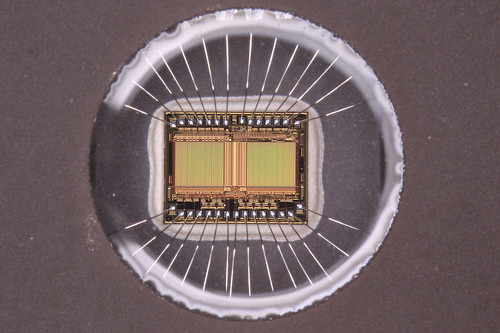Hey all,
Well I've got a schematic for all you TG-16 / PC-E fans out there. It's really simple, really cheap, and works with a single little switch.
Essentially it's just a pair of multiplexers which swap over the neccessary pins required to get PC-E games to run on a TG-16. It will work on a PC-E but you need to add on that pin lift for the hardware querry the TG games do.
I'm going to post images and schems a little later.
However the main point of this topic, is as follows.
I've seen the Neo Flash for PC-E and needless to say 128 Meg of usable space is not exactly perfect. I mean it's a wonderfull first step. But lets look at some other items that are on the market, specifically the cards available for the Nintendo DS. Now the DS is by far a little more compicated than NEC's HU card, as one is able to expand the total available memory exponentially (within limits) to that of a micro SD card. I think the most they can take is around 8Gb
My thinking is there is not a great deal of limitation on space on the label end of an HU-Card except where the GT portable is concerned. So why not have an SD or Micro SD card slot on the back of of the NEO Flash ?
I've not done much programming in a few years, and my ability to program hardware is unfortunatly limited to PLC and assembly line manufacturing. However to what I understand the 128 meg card will hold an array of rom images in which I believe it uses an offset bit to redirect requested information to the corresponding rom image. At least thats my understanding of it's workings I could be 100% wrong without knowing.
However having a controller interface to load the rom image from the SD into static memory of the HU to be used by system based on your selection couldn't be that hard.
As well, aside form a space issue my 2 chip multiplexing switch could be integrated into the software aspect thus switching the output pin addresses without a phisical modification, (I actually think this can be done by editing a Hex address in the header)
I've pulled apart a defective street fighter 2 to try and determine how the bloody thing works, but without the original schematics of the basic HU functionality I'm a bit at a loss. Even with pinout instructions with the address and data pins etc.. (Also I'm a little tired and sick tonight) I had a friend of mine drop by (who's an electronics engineer) and over a few drinks and dinner we discussed the above, however the drinks part seemed to hinder getting anything done aside from some introductory research.
Anyway, if anyone would be interested in helping design a PC-E / TG-16 SD compatible flash cart, or have insight into the workings of such please let me know.
I'll make sure to have the photos and instructions for the simple region modchip up shortly.
thanks
James








 Reply With Quote
Reply With Quote








